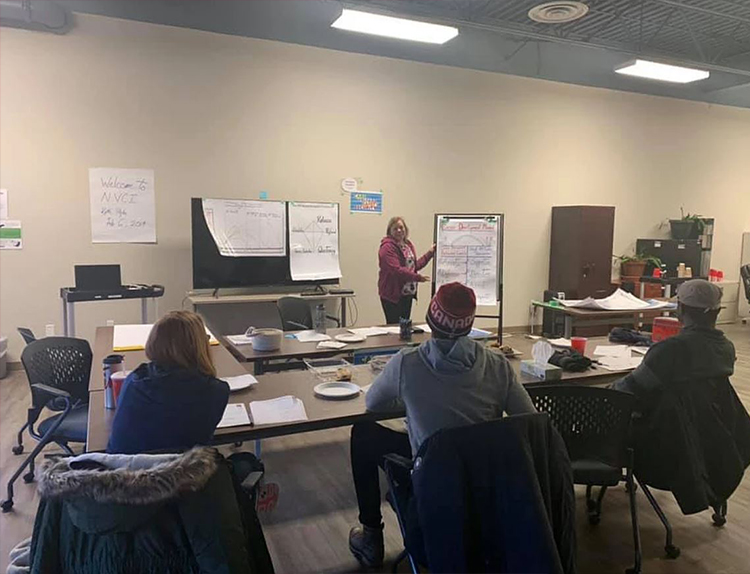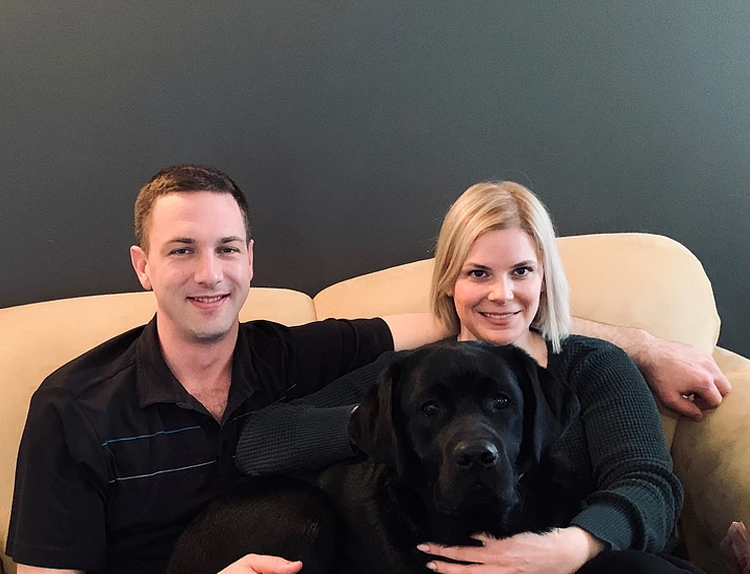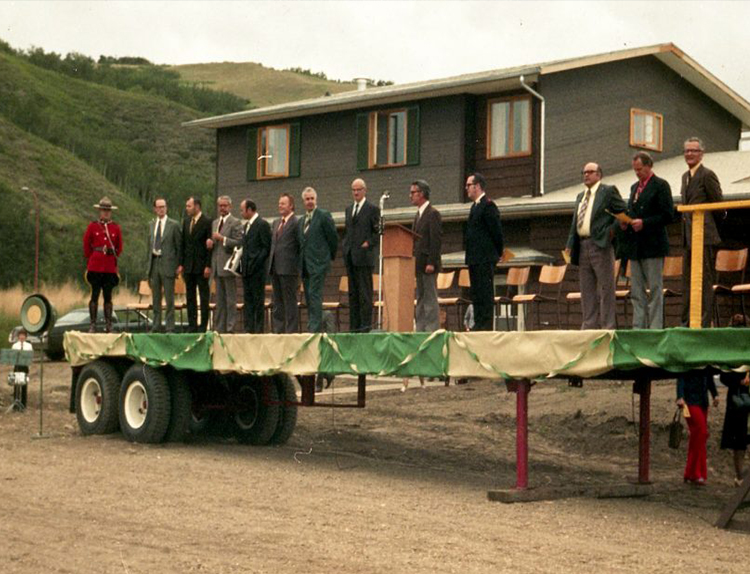Rilla Websdale, our CEO, has been employed by ASLS for over 10 years. Originally from Grimshaw, Rilla and her partner, Ryan, live in Grande Prairie along with their two adopted dogs, Lola and Teddy. Recently, she sat down with our Marketing Coordinator, Glory Przekop for an interview:
Why did you apply? What position were you hired for?
I was hired into an office manager role in Grande Prairie in 2009. The Grande Prairie office and programs were going through transition at that time, and they needed someone who wasn’t afraid of helping to support the implementation of new processes and assist in getting the office organized. Prior to that, I had been involved with ASLS for several years, first as a volunteer, a Residential CSW at 49th Ave Residence, an ILS Community Support Worker in Grimshaw, and at one point I was helping with Administrative Support work in the Grimshaw office for a few years before I moved back to Edmonton a second time for post-secondary opportunities.
Why do you stay?
I live with a belief that the pursuit of perfection requires constant change, and that moving the goal posts regularly so that we are stretching and growing is essential to staying relevant and a valued organization to our funders and society as a whole. Being good enough, frankly, is never good enough. ASLS has a history of being an organization that is never afraid to try something new, and this requires a flexibility and personality that isn’t afraid of failure because there’s a greater belief that something fantastic can be accomplished.
Why did you want to take on the challenge?
I was living in Lloydminster at the time, and while I had been staying in touch with the Human Services sector by working casual shifts at a residence supporting people moving back into community after receiving treatment in a psychiatric hospital, I was primarily doing administrative and HR roles. I enjoyed aspects of both roles, and I knew that this role with ASLS could be an interesting combination of both.
What is one of your fondest memories so far?
When I reflect on the combined total of 18+ years that I’ve worked with ASLS, what I remember most are my experiences providing direct support to ASLS Individuals; some experiences have been inspiring, some have been a bit heart-breaking, and more than a few have been humbling – not limited to the time that someone was upset at me and communicated that by throwing a giant plastic jar of Salsa down the aisle at IGA, splattering me and everything around us with chunky tomatoes – but they all have given me an appreciation for the individuality of the people we support.
What do you tell yourself when it is a stressful day? How do you self-care?
To a certain extent, I am most alive and happy when I’m stressed, so I enjoy opportunities that enable us to pull together as a team and find solutions, and I take stressful situations as a learning opportunity that identify areas of deficiencies that need to be addressed. The Senior Leadership and Management team at ASLS isn’t afraid to embrace humour, and to see the lighter side of stressful situations.
My self-care involves constant learning, as I’m always reading, working on university and related courses, and pursuing new DIY hobbies; my longest-term hobby is making soap and related bath and body care in a little workshop of mine.
What would you say to the founding parents if they were here right now?
I would want to acknowledge their courage; inclusion in community of people with disabilities was not recognized as important at that time. When I was looking at some newspaper clippings to learn more about the origins of ASLS, I was surprised to read an article that referenced that our original residence, Sunshine House, was the first of its kind in Alberta. Even today when we open new residences for Individuals, while we do see occasional support and positivity from the community, we also see discrimination and resistance to the principal of all citizens leading valued, community-based lives.
How has the company changed/evolved since you started?
The most obvious change is that we have grown – in communities supported, programs offered, number of Individuals served, and employees employed. In my role as CEO, we have had to adapt to changing demographics in the province as a result of the update of Individuals with increased complex support needs, changes in management style and employee benefits due to a younger workforce, shifting public and political ideology of support models, and frequent restructuring of organizational structure to be able to address deficiencies and make improvements. The only thing that hasn’t changed since my initial involvement with ASLS, is that we are always changing!
How has ASLS impacted your personal life?
My involvement with ASLS dates back to when I was six years old, and my older sister moved into what is now the old Wilcox Residence in Grimshaw. Because of Tricia, who passed away in 2010 at age 37, I have been involved with ASLS in varying capacities for 30 years; my career in Human Services was something that may not have been the path that I’ve taken, if it wasn’t for Tricia and my involvement I’ve had with ASLS in that time.
What do you do in your spare time?
When it’s cold and I’m avoiding the outdoors: Courses, reading, organizing (apparently it isn’t ‘fun’ for most people to spend free time organizing and labeling storage boxes?), crafting things, whipping up meals in my Instant Pot, baking, genealogy, and Pilates. In the summer I like going out to the mountains to quad and camp.
If you could not work here, where would you work?
My next phase would ideally include owning and operating a Bed & Breakfast or Inn.
What is your hidden talent that can be shared with the public?
I’m oddly and alarmingly flexible, which I finally found out last year is due to having a condition called Joint Hypermobility Syndrome. If you’re going to have a disorder of any kind, you may as well find the positive in it!
What do most people not know about you that you would like them to know?
I am the textbook definition of an Introvert, so those of you that are extroverts don’t quite understand us (as we don’t understand you sometimes)!






